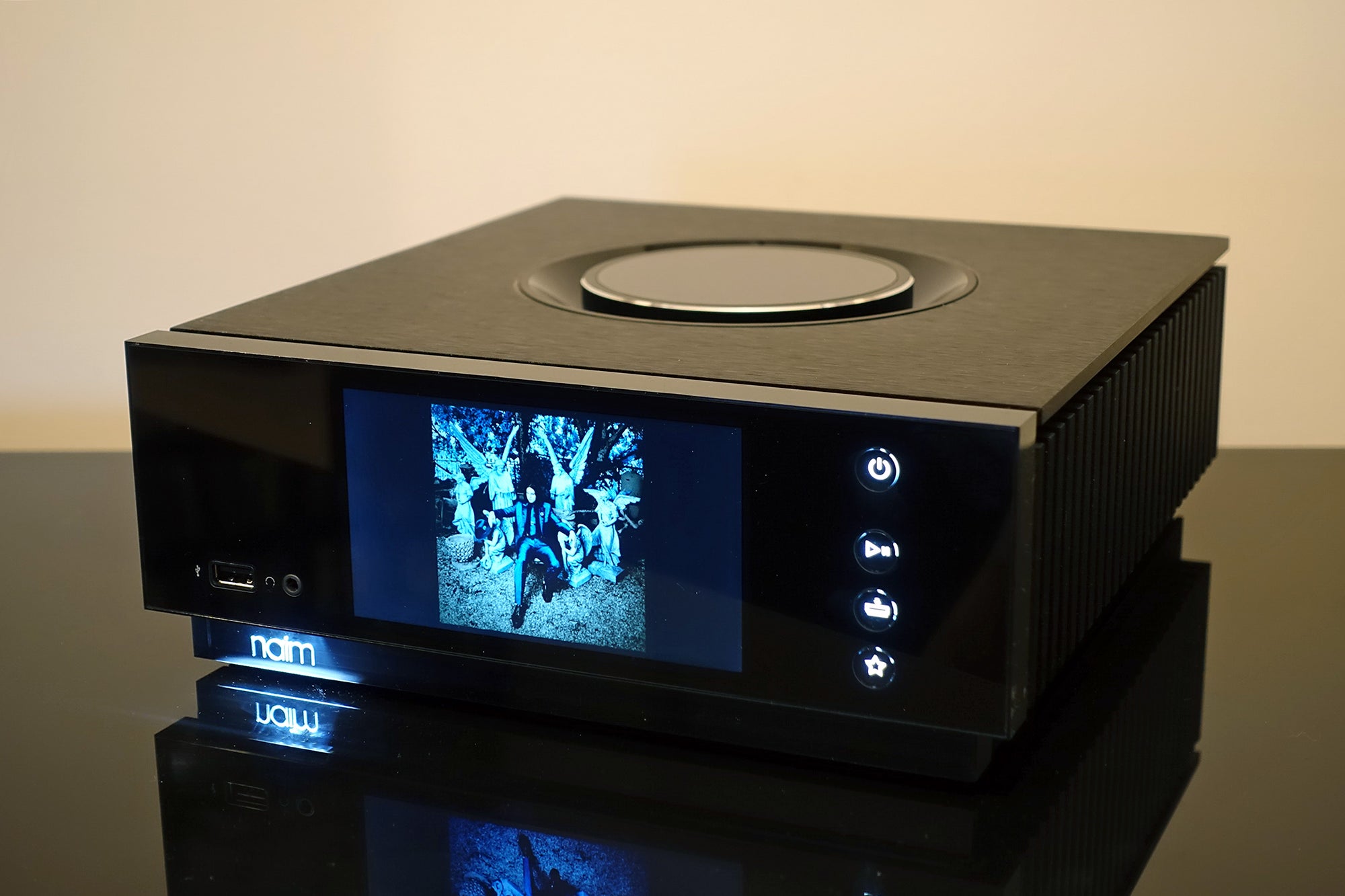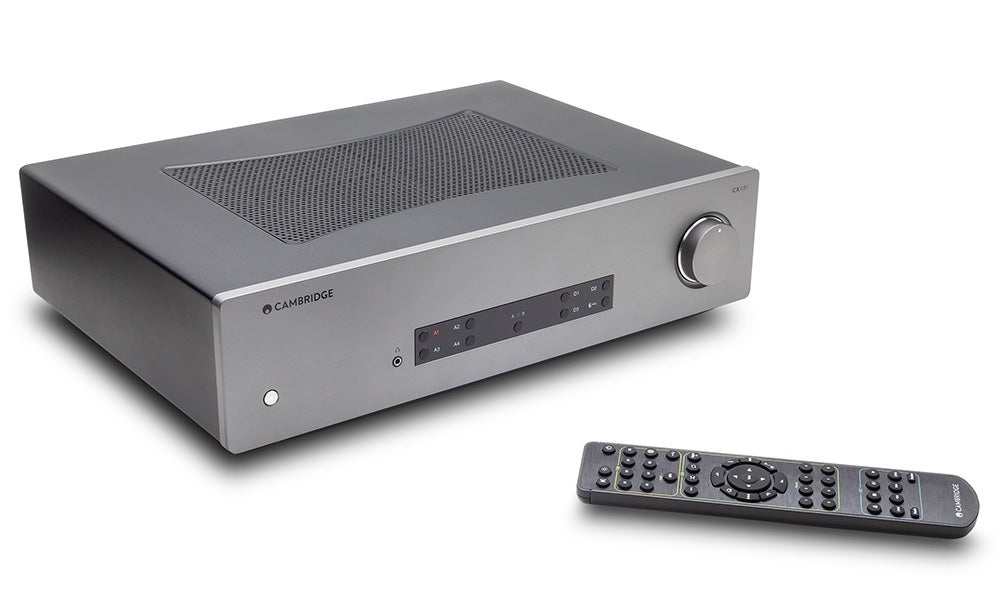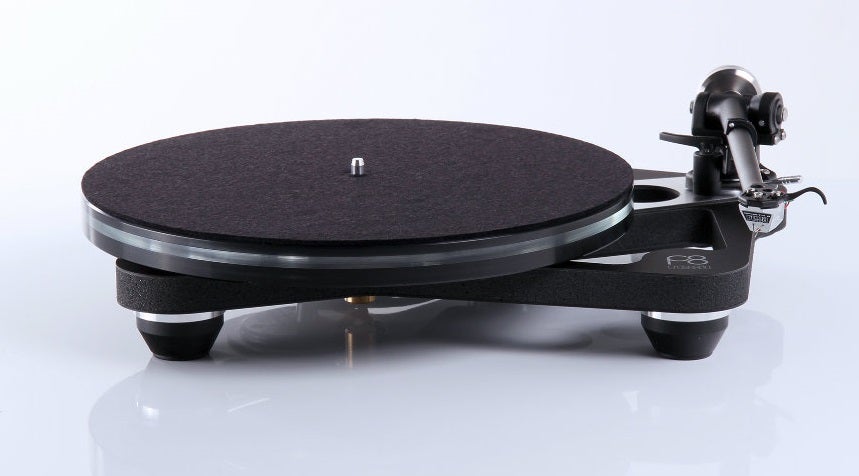Pro-Ject Automat A1 Review
There’s lots to like about the A1 just falls short of being the complete package
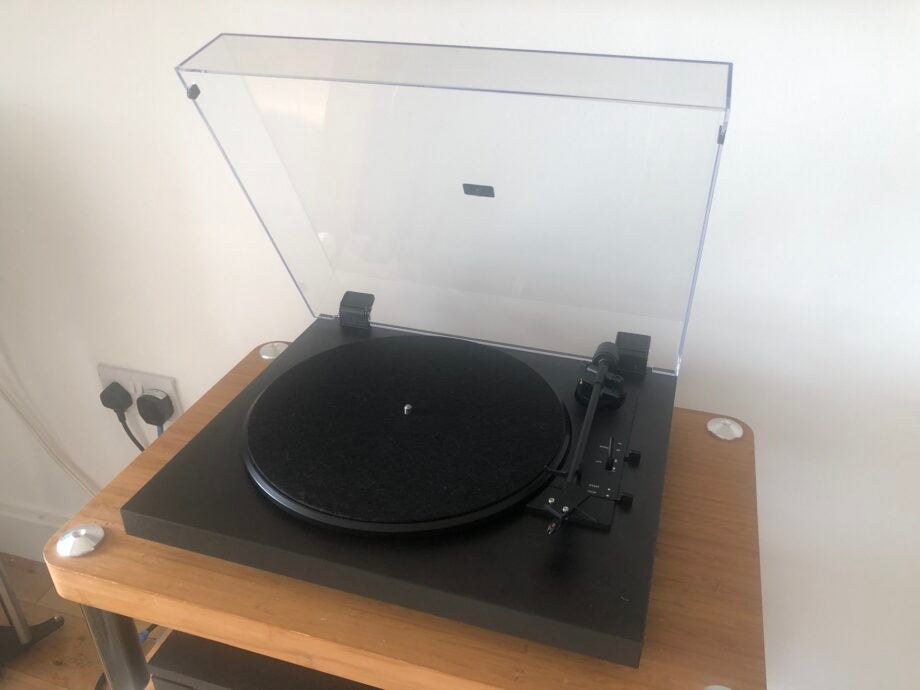

Verdict
There’s plenty to like about the Automat A1, especially where sound is concerned; but it stops just short of being the complete package.
Pros
- Eloquent, poised and engaging sound
- Plug-and-play convenience for any system
- Integrated phono stage performs well
Cons
- Can’t make the most of dynamic variations
- Doesn’t look or feel remotely special
- Phono stage control looks unfinished
Key Features
- Integrated moving magnet phono stagePhono stage can be switched off for an external one
- Ortofon OM10 cartridgeRecord player comes with the cartridge pre-fitted
- 33.3 and 45rpm speedsChange speed with a single button
Introduction
You can’t accuse Pro-Ject of rushing into anything. The company has been hard at it for more than 30 years now, its position as one of the true hardware heroes of the Vinyl Revival™ assured. And now, it seems, the time is finally right for a fully automatic range of turntables. It’s called ‘Automat’, and the A1 is the inaugural product.
Of course, ‘automatic’ is a word that can apply only so far where turntables are concerned. And, thanks in no small part to Pro-Ject itself, the world isn’t short of turntables at this sort of money. So does the A1 have what it takes to become an automatic choice?
Availability
- UKRRP: £369
- USAunavailable
- Europeunavailable
- Canadaunavailable
- Australiaunavailable
The Pro-Ject A1 is on sale now, and in the UK is priced at £369. In the US it costs $499, while in Australia you’ll need to part with AU$699. Note that last figure is based on exchange rates – because, at the time of writing, Australian pricing has yet to be been confirmed.
As mentioned, the A1 is far from the only game in town at this sort of money. We’re particularly taken with Audio-Technica’s AT-LP5X, which doesn’t have the Pro-Ject’s automatic stop/start feature but counters this with a USB output (for making digital copies of your vinyl) – and is a few quid less expensive, too.
Design
- Made in Europe
- Designed for optimum resonance rejection
- Look like a record player
Attempts to ‘update’ or ‘reimagine’ the design of the turntable are doomed to failure. Pro-Ject, of course, is far too sensible a company to even try. As such, the A1 looks precisely as you might suppose: like a record player.
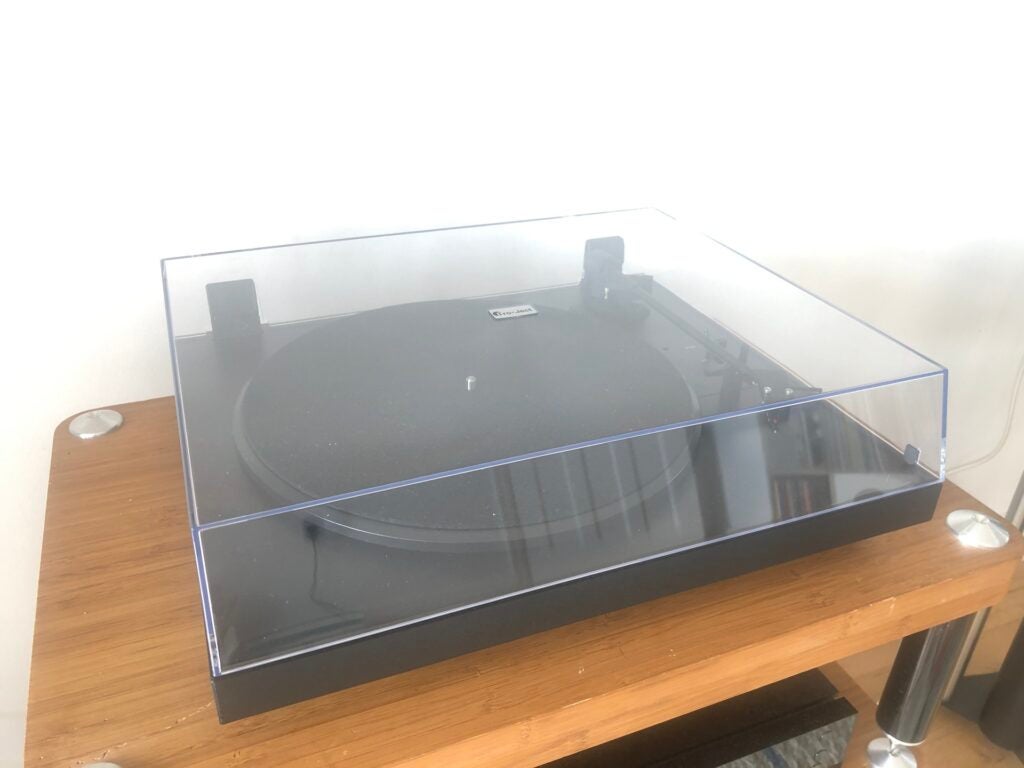
The A1 is the first product to emerge from Pro-Ject’s new production facility in Germany. It’s available only in black, and its wooden chassis has silicon-damped feet below and a clear plastic dust-cover above. Like many a turntable at this sort of money, it’s hardly the last word in luxury. However, like every other Pro-Ject turntable, the A1 is properly built and finished.
Features
- Aluminium/carbon-fibre tonearm
- Integrated – and well-hidden – phono stage
- Pre-adjusted Ortofon cartridge included
As far as controls go, the A1 has just about enough. There’s a switch for toggling between 33.3 and 45rpm, a control to lift or lower the 211mm aluminium tonearm, and there’s a ‘stop/start’ switch to deploy the ‘automatic’ aspect of the A1’s specification.
Basically, if you select ‘start’ then the damped metal platter will begin to turn, and the tonearm lifts itself from its cradle, moves above the spinning vinyl, lowers itself into the groove and away you go. When the A1 detects it’s reached the end of the record, the tonearm lifts and returns to its cradle as the record stops spinning. You can manually select ‘stop’ at any time, of course.
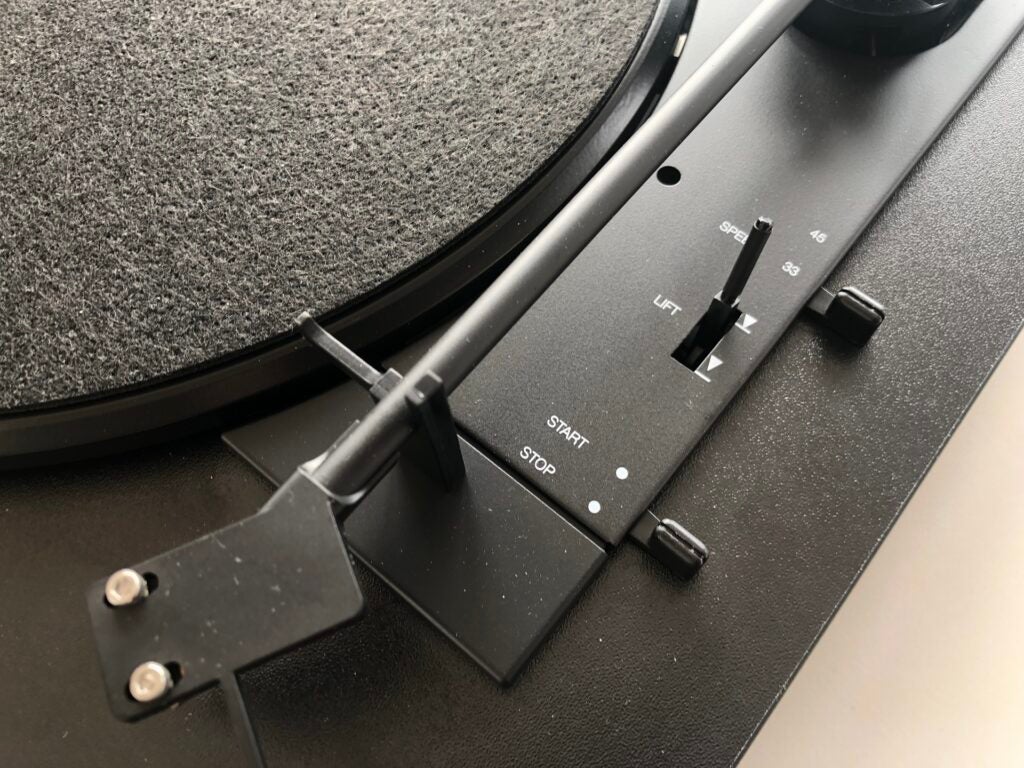
It’s worth noting that the A1 has never heard of 12in discs that spin at 45rpm – so if you have 12in singles, or one of those expensive remasters of albums that turn at 45rpm, there’s quite a lot more manual input into getting your record playing than the word ‘automatic’ might imply. Certainly more than is necessary with a fully manual turntable.
The tonearm headshell is reinforced with carbon fibre, and is fitted with a very acceptable Ortofon OM10 moving magnet cartridge – it’s pre-aligned and pre-adjusted for tracking force. Really, all that’s required is to connect the A1’s hard-wired phono cables (and grounding cable) to your speaker system and you’re in business.
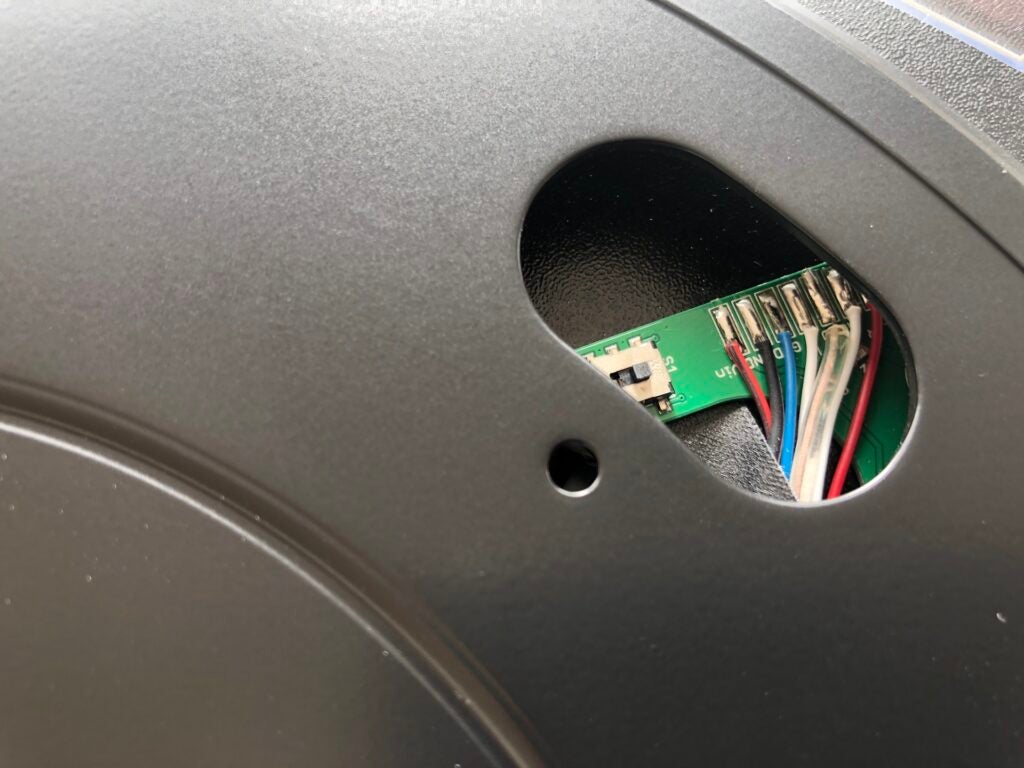
Or, at least, you’re in business once you’ve switched the integrated phono stage on or off. The A1 is far from the first record player to feature sufficient onboard amplification to make a record audible, even through systems that don’t have the necessary oomph. However, it may well be the first that makes switching the phono amplification on or off feel quite so unauthorised.
Most decks with an integrated pre-amp tend to keep their ‘on/off’ control on the rear panel – but here it’s an absolutely minuscule switch – alongside some alarmingly exposed-looking wiring – underneath the belt-driven platter.
Sound Quality
- Even, balanced and information-rich sound
- Expressive and articulate
- Not the last word in dynamic potency
If your existing system features pre-amplification for a turntable, you can compare and contrast with the equivalent that’s onboard the A1. But if it doesn’t, never fear – Pro-Ject has fitted the A1 with a pre-amp that’s more than capable in the context of the type (and cost) of the system the A1 is likely to find itself part of.
A hefty reissue of Sufjan Stevens’ Come On Feel the Illinoise is up and running in no time – the ‘automatic’ element of the A1 doesn’t take the hard graft away from the end user, but what it does it does flawlessly. And the Pro-Ject automatic mechanism is entirely disengaged once the cartridge engages with the vinyl, so you can be certain the sound the A1 is making is uncorrupted by any internal influence.
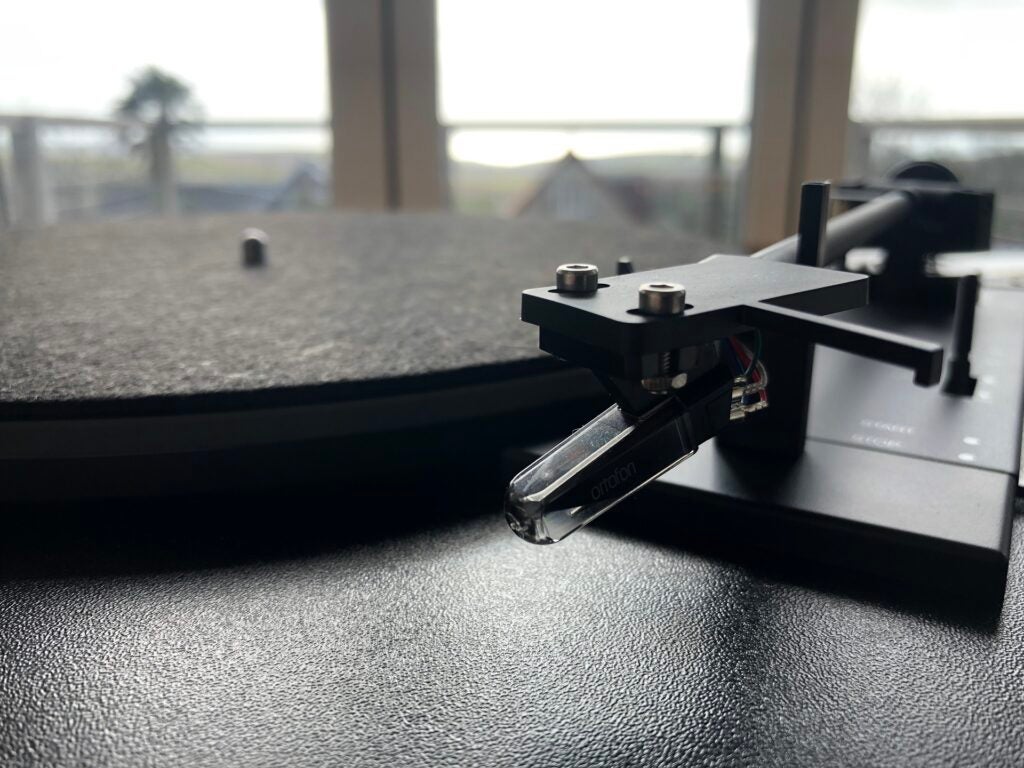
And, as the last 30 years of Pro-Ject turntable heroism has primed everyone to expect, that sound is convincing, coherent and very listenable indeed. The vinyl format hasn’t hung around all this time by accident, and the A1 demonstrates a lot of what makes it so many people’s format of choice.
Where timing, unity of presentation of rhythmic expression is concerned, the A1 is a match for any price-comparable alternative. It journeys from the bottom of the frequency range to the stop in an even-handed, unforced and tonally consistent manner, and reveals a stack of detail at every stage.
The low-end is substantial and punchy, but controlled enough to keep up the momentum of a recording, and although the top-end is short of ultimate extension, it’s still bright and attacks crisply. In between, there’s more than enough space for the singer to stretch out and express himself.
About the only area where the A1 is anything less than fully competitive is where dynamic expression is concerned. Pretty much every tune on the Sufjan Stevens LP is populated with real, well-recorded instruments – mostly of wood and brass.
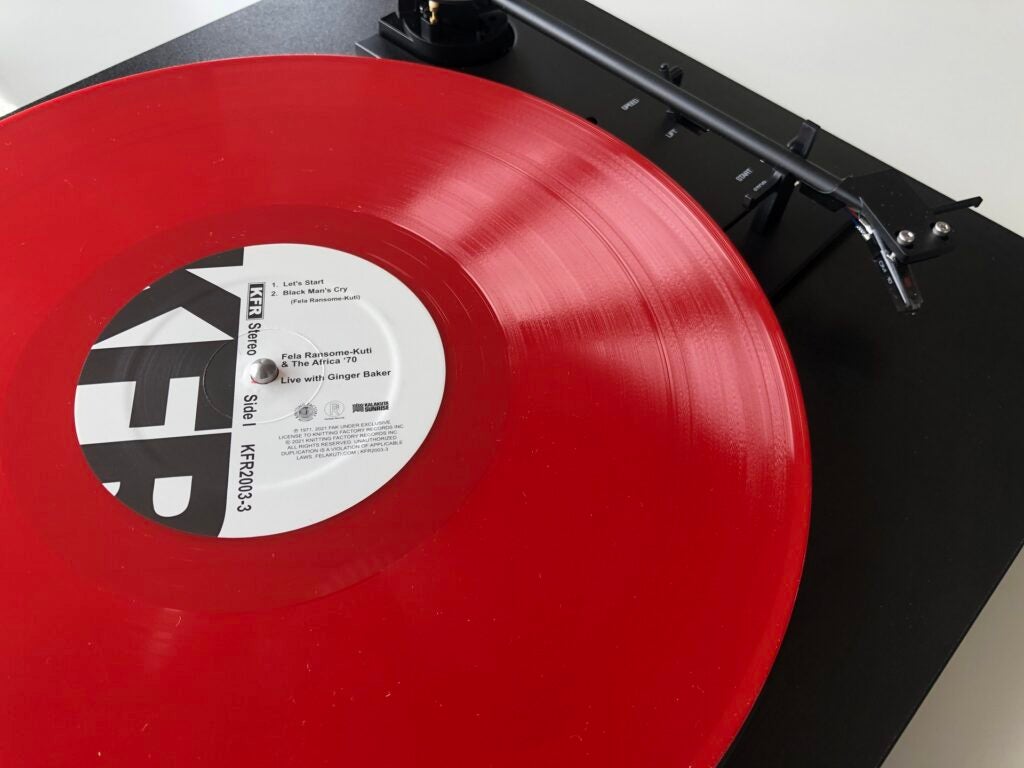
The Pro-Ject is good at revealing details regarding tone and timbre, but a little less adept at identifying the harmonic variations that occur from note to note – although in context it’s hardly a deal-breaker. Similarly, a 45rpm 12in single of Cabaret Voltaire’s Sensoria (laboriously cued up, though, because no-one wants to start hearing it from five inches in) highlights a slight, but definite, reticence where the bigger dynamic shifts of volume and attack are concerned.
Not everyone wants their ears pinned back when listening to records, however, and the Pro-Ject A1 gets so much right that these minor drawbacks are quite easily overlooked. Or, at least, most people will find it possible.
Latest deals
Should you buy it?
You want to add some convenience to this most inconvenient format Auto stop/start turns out to be properly labour-saving.
You own a lot of 12in 45rpm vinyl The A1 is more bothersome than a manual deck in this regard.
Final Thoughts
On paper, the benefits of an ‘automatic’ turntable don’t seem all that significant; but in practice it’s very convenient, especially when it comes to taking the needle off the record in good time. Playing anything that isn’t a 33.3 12in disc or a 45rpm 7in alternative makes the A1 a lot less ‘automatic’, however, which is a pity. As far as sound is concerned, it’s almost all the way there – which will be plenty far enough for a lot of listeners.
How we test
We test every turntable we review thoroughly over an extended period of time. We use industry standard tests to compare features properly. We’ll always tell you what we find. We never, ever, accept money to review a product.
Find out more about how we test in our ethics policy.
Tested for more than a week
Used with a range of records
FAQs
The Pro-Ject A1 comes with an Ortofon OM10 cartridge that’s pre-fitted to the tonearm. If you want to switch to another cartridge, it will accept any cartridges with half-inch mounting holes.
33.3/45rpm speeds are supported and you can change between the two via the switch on the side of the record player. Only certain record sizes appear to work, however (33.3rpm 12-inch, 45rpm 7-inch)
The Pro-Ject A1 model has an auto-stop feature, whereby when the record is finished, the tonearm will lift off the record and return to its initial position.


